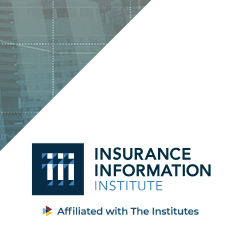
As quickly as the coronavirus is spreading, so is the amount of published information available to help insurers and their customers navigate this confusing environment. But separating information from misinformation and the truly useful from the merely “nice to know” can be a challenge.
As a service to our readers, Triple-I Blog is aggregating and sharing some of these resources. We’re gathering links and descriptions into blog posts like this one and have established a page on our website – COVID-19: Issues and Impacts – that categorizes the posts and makes them easier to find.
Brian Fannin, a research actuary at the Casualty Actuarial Society (CAS), published a paper called COVID-19: A Property/Casualty Perspective to “start the conversation about what happens next.”
The paper addresses, among others, the following questions:
- To what extent, if any, was P/C risk underpriced?
- Given the dramatic cessation of economic activity, what lines may have been overpriced? Was such a scenario foreseeable?
- How will ratemaking models respond to the changes in coverage wording that will undoubtedly appear in the future?
- How can actuaries assist in the development of viable coverages to meet new demand in the market?
- Do actuaries have any advice about communication of risk and how best to mitigate it?
The National Council on Compensation Insurers (NCCI) has published an article COVID-19 and Workers Compensation: What You Need to Know to share its answers to questions NCCI has received regarding COVID-19 and the impact it may have on the workers comp industry.
As part of its effort to provide information on workers comp legislative activity, NCCI also monitors workers compensation-related bills in all jurisdictions and the federal government. You can follow such activity here.
On the non-P/C side, The New York Times published Coronavirus May Add Billions to the Nation’s Health Care Bill, which warns that health insurance premiums could rise as much as 40 percent next year as employers and insurers confront the additional costs associated with the pandemic.
The Times cites an analysis by Covered California that finds:
- One-year projected costs in the national commercial market range from $34 billion to $251 billion for testing, treatment, and care specifically related to COVID-19;
- Potential COVID-19 costs for 2020 could range from about 2 percent of premium to over 21 percent if the full first-year costs of the epidemic had been priced into the premium;
- Health insurers are setting rates for 2021. If they must recoup 2020 costs, price for the same level of costs next year, and protect their solvency, 2021 premium increases to individuals and employers from COVID-19 alone could range from 4 percent to more than 40 percent.
Two recently published pieces provide historical comparisons of COVID-19 with the 1918 global flu pandemic:
The National Bureau of Economic Research (NBER) has published Pandemics Depress the Economy, Public Health Interventions Do Not: Evidence from the 1918 Flu, which looks at the long-term economic impact of the 1918 “Spanish Flu.” It finds that, while the decreased economic activity caused by the pandemic outlasted it by years, some societies took steps that softened the economic impact and lessened the death toll.
National Geographic has published How Some Cities Flattened the Curve During the 1918 Flu Pandemic, which shows how social distancing saved thousands of American lives during the last great pandemic. The piece includes some great data visualizations depicting how the flu played out from city to city.
Consulting firm PwC has published COVID-19: What Business Leaders Should Know that provides advice on six key areas businesses should be focusing on:
- Crisis management and response
- Workforce
- Operations and supply chain
- Finance and liquidity
- Tax and trade
- Strategy and brand
All of these areas are relevant to risk management and insurance.
Stay tuned – we’ll be continuing our reporting on and curation of COVID-19-specific information as long as the need for it continues.








